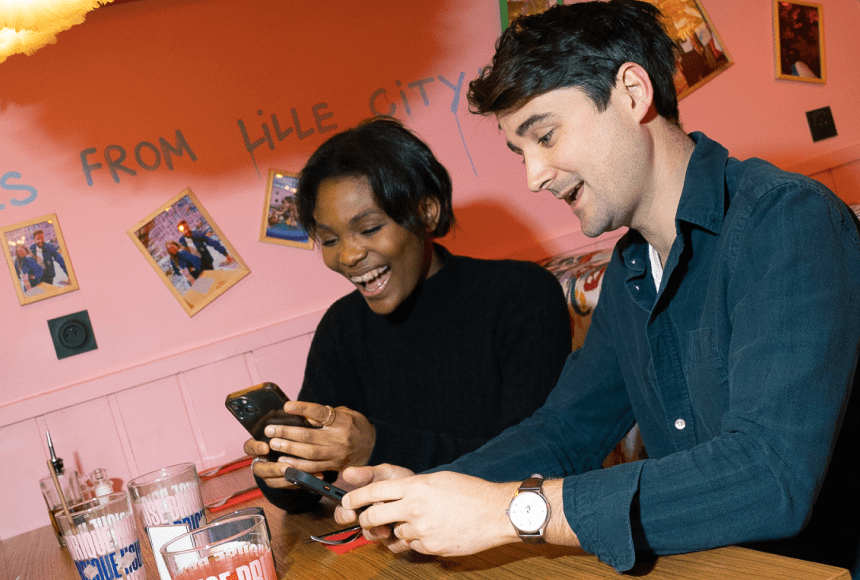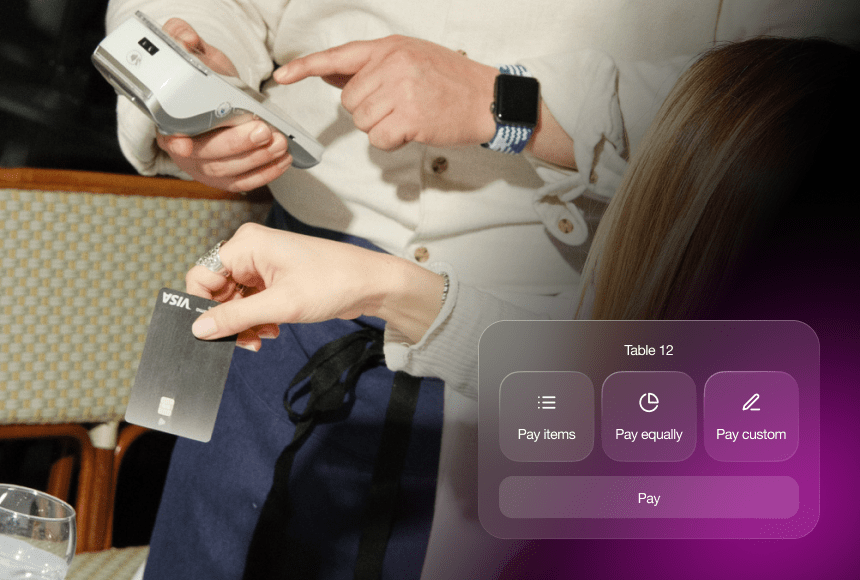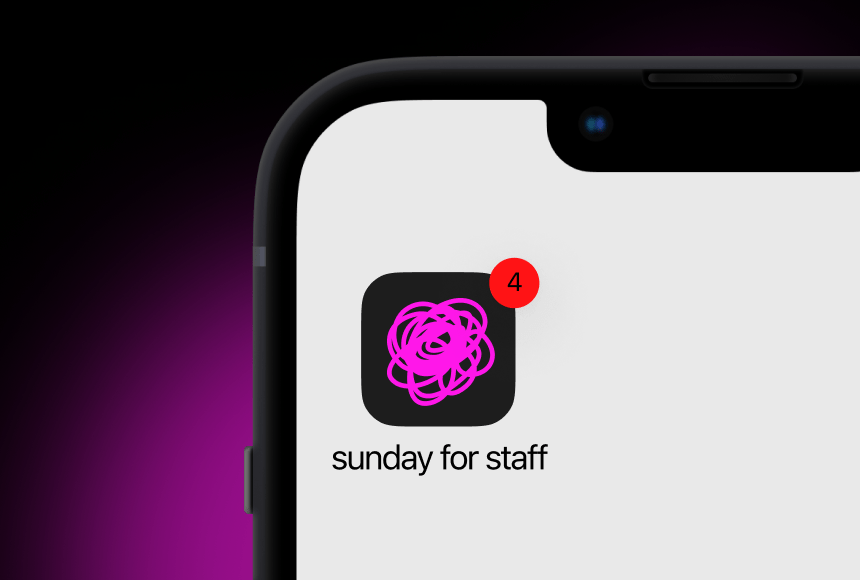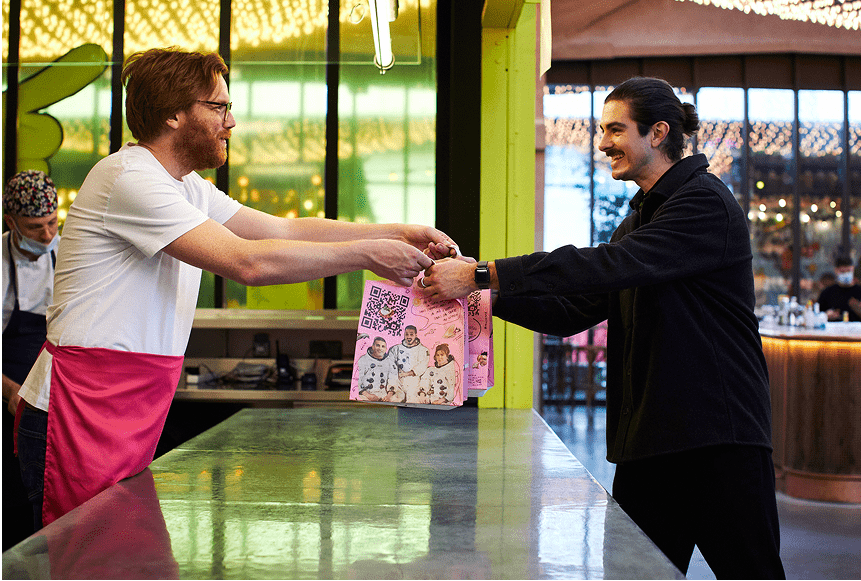
Fast and Effective Pay-at-Table Training for Your Restaurant Team
Why Embrace Pay-at-Table Systems?
Pay-at-table solutions are rapidly becoming a standard across the UK’s restaurant scene. Instead of handling physical cash or using a stationary card machine, customers can now pay, leave a tip, and even post reviews directly from their mobile devices. These pay-at-table platforms use a quick scan of a simple QR code, integrated with a secure payment platform, to deliver a faster and more convenient checkout experience.
A great example is sunday’s pay-at-table solution. Not only does it let diners pay on the spot, but it also assists restaurants with an easy tipping mechanism and a built-in option for guests to share their experience. According to a recent report by The Caterer, patrons in the UK increasingly look for swift digital payment experiences, valuing convenience and reduced waiting times. That’s where pay-at-table technology excels.
Embracing this technology can lead to:
- Faster Table Turnover: When payment is quick, other guests can be seated sooner.
- Increased Customer Satisfaction: Diners appreciate not needing to flag down staff for the bill.
- Higher Tips: Digital tipping features often encourage bigger gratuities.
- Streamlined Operations: Your team can focus on customer interaction, rather than on running receipts or waiting for card transactions.
Setting the Scene: Common Staff Concerns
Before jumping into a quick training plan, recognise that your team might have reservations. It’s natural. New technology can be intimidating, especially if staff members worry that handling payments and day-to-day service tasks simultaneously will overwhelm them. There could also be concerns about:
- Technological Reliability: “What if the QR code doesn’t work?”
- Complexity: “Am I going to spend all day explaining the method to customers?”
- Interaction with Diners: “Will it depersonalise the relationship I have with guests?”
These are legitimate questions. However, pay-at-table solutions are typically designed to be intuitive and user-friendly, with a straightforward interface that requires minimal effort from both customers and staff. By addressing these worries upfront, you can create a sense of confidence and show that pay-at-table isn’t a threat to good service but a complement to it.
Step-by-Step: Train Your Staff in Under 10 Minutes
Restaurants operate under pressure—like a hot kitchen during the midday rush. You need a training method that’s both swift and thorough. Below, you’ll find a concise but powerful training plan that can realistically be carried out during a brief staff meeting, a pre-shift huddle, or even over a quick afternoon coffee break.
1. Introduce the Basics (2 minutes)
Kick off by explaining what pay-at-table is and why you’ve chosen to implement it. Keep it simple:
- Define Pay-at-Table Clearly: “It’s a system that lets guests pay directly by scanning a QR code on their phone. No more waiting for the bill or passing around a card machine.”
- Highlight the Advantages: “You won’t have to print receipts and move back and forth to the payment terminal. It’ll save time, enhance the customer experience, and boost tips.”
- Address Staff Anxiety: “If there’s a glitch, we’ll have a fallback—like a standard card machine. You’re never stuck.”
Use real-world examples to illustrate how much easier life will be: “Think about the dinner rush at 7 p.m. Instead of juggling multiple card payments, you can seat more tables, ensure a great guest experience, and still have time to check on the kitchen.”
2. Hands-On Demonstration (3 minutes)
While words help set the scene, nothing beats seeing the system in action. If possible, show staff the process live. If you don’t have tables set up, you can do a quick mock demonstration:
- Display the QR Code: Show them where guests will scan from their phone. This might be on a tabletop sticker, a small stand, or directly printed on the receipt if you want to go hybrid.
- Simulate a Payment: Open the platform on a phone—demonstrate scanning, selecting the bill, adding a tip, and confirming payment.
- Show the Notification Staff Receives: Some systems send a direct alert to servers that the bill is settled, preventing confusion about whether a table has paid.
Use simple scripts, such as: “Hello, let me quickly show you how your guests will scan this QR code with their phone. Once scanned, they’ll see a digital version of the bill, add a tip, and pay securely. Afterwards, they may leave a review, giving us immediate feedback.”
3. Quick Troubleshooting Tips (2 minutes)
Even the finest recipe can go awry if we don’t plan for mishaps. Equip your team with immediate troubleshooting strategies:
- QR Not Scanning: Suggest a quick wipe of the phone camera lens or more lighting on the code itself.
- Guest Without a Smartphone: Default to your traditional card machine. Keep it on hand, but emphasise that fewer and fewer guests rely on this method.
- Slow Connectivity: Encourage guests to switch to data if the Wi-Fi is lagging, or offer them your guest network details.
This segment reassures team members that a backup plan always exists. They’ll go into service feeling confident, aware that pay-at-table doesn’t leave them stranded.
4. Perfecting Guest communication (2 minutes)
Communication is everything in hospitality. Pay-at-table might be new to some guests, so your staff must be prepared to answer queries in a friendly, welcoming tone.
- Offer a Brief Explanation: “Would you like to pay via QR code today? It’s quick, secure, and you can leave a tip if you’d like.”
- Emphasise Ease of Use: “Just open your camera, scan, and you’re set. It’s as simple as scanning a menu board.”
- Be Ready for Questions: “How do I know it’s safe?” Staff can respond: “The payment is fully encrypted, so your data is secure.”
You can even put up small instruction cards on tables. A short, straightforward line like: “Scan. Tip. Pay. Done!” is usually enough to capture attention without overwhelming guests.
5. Wrap-Up & Practice (1 minute)
Finally, leave room for a couple of practice rounds or clarifying questions. If you have new hires or staff less comfortable with technology, encourage them to scan the code themselves a few times or role-play with a colleague.
- Encourage Repetition: “Feel free to test it out. The more you use it, the quicker you’ll get.”
- Promote Team Support: “If you’re unsure at any point, ask a colleague who’s comfortable with it. We’re in this together.”
After these five steps—if done efficiently—you’ll have spent just under 10 minutes. Your team will walk away empowered, with enough knowledge to introduce diners to a modern payment method that’s both simple and efficient.
Real-World Application: The Busy Brunch Example
Picture a trendy café serving an all-day brunch that’s always packed on weekends. Prior to implementing pay-at-table, staff spent valuable minutes running back and forth between tables and the stationary payment terminal, especially when multiple parties wanted to pay at once. This often caused frustrating queues at the till.
Enter pay-at-table via QR codes. When customers finished their pancakes or avocado toast, they simply scanned the code on their phone, reviewed their bill, tapped their tip, and completed the payment. A subtle beep from the system notified staff that the bill was closed. No piling up of receipts, no rummaging for exact change, and no hushed attempts to split the bill among friends.
Staff quickly realised that what once felt like an endless wave of tasks—bringing the bill, waiting for a card, returning to the table for a signature—was drastically reduced. Instead of juggling payment after payment, they could focus on checking if the cappuccinos needed a top-up or if a regular wanted an extra portion of bacon. And that’s the power of a well-integrated pay-at-table system.
Encouraging Staff Ownership of the Process
While the technology is virtually plug-and-play, it still needs championing from your team. Make them stakeholders in the process:
- Highlight Benefits: Emphasise how it can improve tips and reduce stress. Having fewer transactions to handle physically can mean more attention to that quick banter or upsell.
- Feedback Path: Provide a channel (maybe a shared notebook or group chat) for their ideas on fine-tuning the system. Did a guest have trouble scanning? Document it.
- Celebrate Wins: If you notice higher tips or improved table turnover, share these milestones so staff see the real impact of their efforts.
A sense of ownership often translates to stronger motivation and smoother adoption. What was once ‘the restaurant’s system’ can feel like ‘our system.’
Beyond the Basics: Going the Extra Mile
Training your staff in under 10 minutes lays the groundwork, but you might want to enrich their knowledge once the basics are nailed down. Consider adding:
- Advanced Insights: Show them how to guide guests who want itemised breakdowns, especially if your pay-at-table solution displays courses in detail.
- Upselling Opportunities: Some platforms let you display add-ons or upgrades before finalising a payment. If that is relevant, teach staff to casually remind diners about these offers.
- Integration with Reviews: If your pay-at-table system allows guests to post a Google review on the spot, train your staff to politely mention it to satisfied diners. Positive feedback can flourish on the platform!
These added layers can elevate both the dining experience and your restaurant’s overall brand image.
Statistics Speak: The UK Diner’s Mindset
It’s not just about convenience—it’s about meeting modern diners’ expectations. A study by Statista found that over half of UK consumers prefer mobile or contactless transactions when paying for meals, as it saves time and feels more hygienic. Further research indicates that digital tipping is on the rise because customers find it simpler to add a tip digitally rather than dealing with coins or confusions about rounding up.
These numbers align perfectly with the idea of pay-at-table. By investing in staff readiness for this technology, you’re actually aligning your operations with a fast-growing industry trend.
The Positive Ripple Effect for Your Business
Implementing pay-at-table technology has impacts beyond just payment. It can stimulate customer loyalty, create buzz, and encourage staff longevity through streamlined workloads. Over time, you might notice:
- Smoother Shifts: Because staff spend less time processing payments, your kitchen and floor teams can coordinate more effectively.
- Better Online Reputation: If satisfied diners review your restaurant thanks to the link in the payment process, you could witness an uptick in positive digital word-of-mouth.
- Accuracy in Sales Data: Automated systems can help you avoid tilting your head at the end of the day, trying to resolve discrepancies in the till.
Nurturing a Culture of Adaptability
Restaurants are living, breathing environments where adaptability is crucial. Menus change, new dietary trends emerge, and technologies evolve. Pay-at-table is just one piece of the restaurant technology puzzle. By running a short training session that instills flexibility and a willingness to learn, you prime your team to be more receptive to future updates, whether it’s ordering kiosks or interactive digital menus.
Remember: you’re ultimately in the hospitality business, not beholden to every new gadget that comes along. But if a solution simplifies operations, enhances guest happiness, and leads to a better bottom line, it’s worth a careful look—and a well-structured if brief training session.
Your Next Steps for Seamless Service
Ready to whip up a streamlined payment recipe for your restaurant? By allocating less than 10 minutes, you can slot in a pay-at-table training session that leaves your staff confident and prepared. Think of it like that perfect dash of seasoning—it lifts flavours and makes every dish shine, but it doesn’t swamp the natural goodness of your main ingredients.
Consider running a quick refresher every few months or whenever you update your system. Invite feedback from staff who are hands-on with your guests—it’s the best way to iron out any hidden wrinkles. And if you’re exploring advanced solutions like sunday’s QR payment platform, remember that strong back-of-house operations start with a well-informed, confident front-of-house team.
The restaurant industry is fast-paced, but turning to a modern pay-at-table solution can be a bright spot: fewer logistical hurdles, happier diners, and a workforce that feels genuinely supported. The next time you gather your team for a quick briefing, remember these simple steps, demonstrate the system, and watch as your restaurant’s staff adapt in record time.
Find out more today
Drop us your details below and we’ll reach out within the next 24
“Bill please” is a thing of the past.
With our integrated QR codes your customers pay in seconds, straight from their table.




